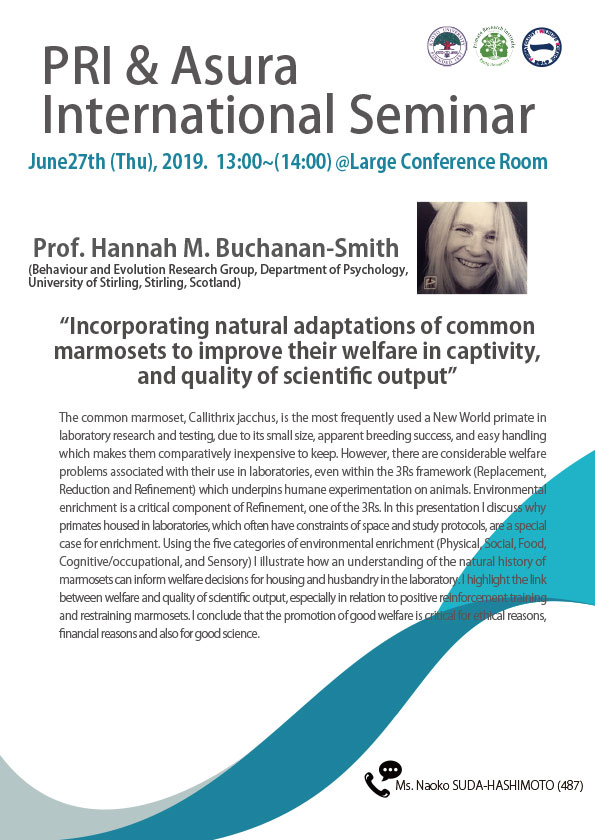Incorporating natural adaptations of common marmosets to improve their welfare in captivity, and quality of scientific output

Date & Time
June 27, 2019. 13:00-
Location
Large Conference Room, PRI
Lecturer
Prof. Hannah M. Buchanan-Smith
Behaviour and Evolution Research Group, Department of Psychology, University of Stirling, Stirling, Scotland
The common marmoset, Callithrix jacchus, is the most frequently used a New World primate in
laboratory research and testing, due to its small size, apparent breeding success, and easy handling
which makes them comparatively inexpensive to keep. However, there are considerable welfare
problems associated with their use in laboratories, even within the 3Rs framework (Replacement,
Reduction and Refinement) which underpins humane experimentation on animals. Environmental
enrichment is a critical component of Refinement, one of the 3Rs. In this presentation I discuss why
primates housed in laboratories, which often have constraints of space and study protocols, are a special
case for enrichment. Using the five categories of environmental enrichment (Physical, Social, Food,
Cognitive/occupational, and Sensory) I illustrate how an understanding of the natural history of
marmosets can inform welfare decisions for housing and husbandry in the laboratory. I highlight the link
between welfare and quality of scientific output, especially in relation to positive reinforcement training
and restraining marmosets. I conclude that the promotion of good welfare is critical for ethical reasons,
financial reasons and also for good science.